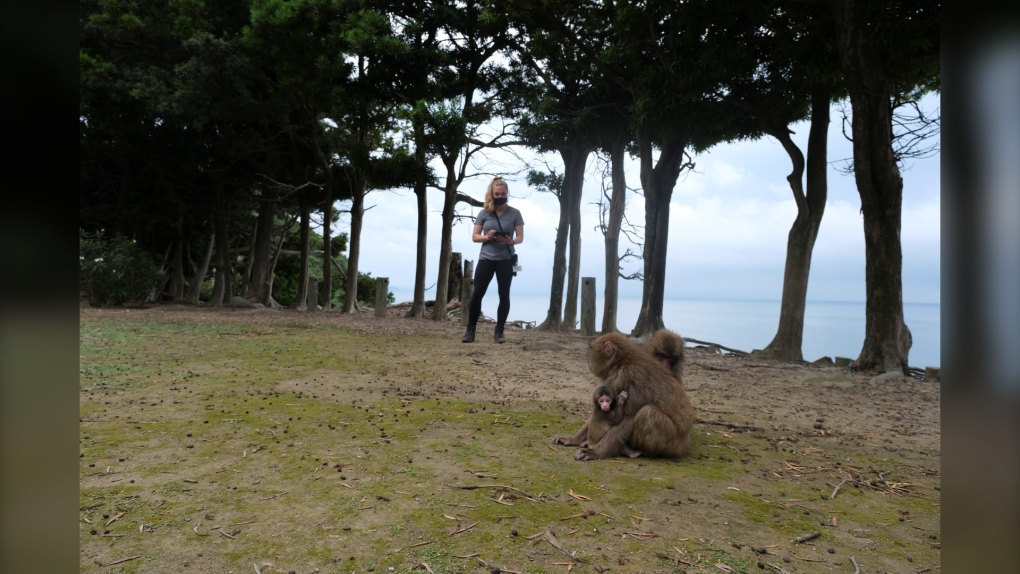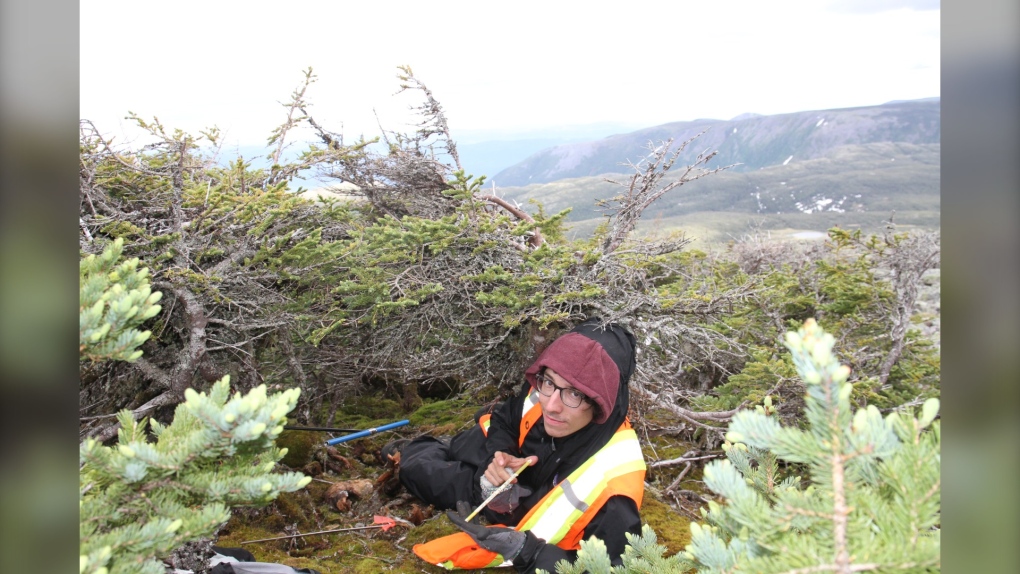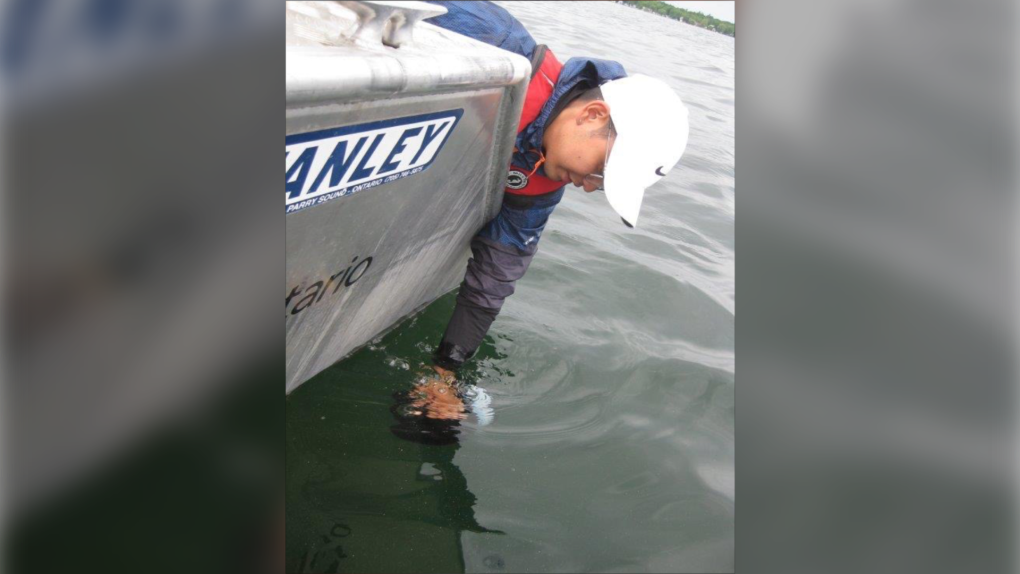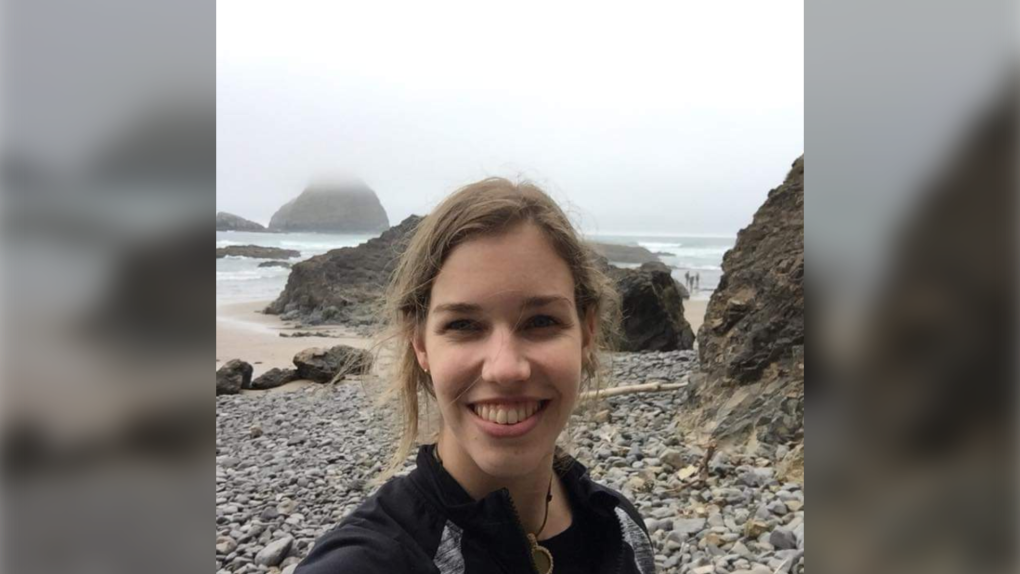Studying for a better future: Meet the Montreal students devoted to the climate cause
When Brogan Stewart started her undergrad in environmental science, she didn’t think she’d end up in Japan a few years later, hanging out with a group of monkeys.
But, as many students will discover, the ever-evolving world of environmental studies can take you far and wide.
Stewart, now a PhD student, is one of a growing number of pupils joining the field – and in doing so, tackling climate change and environmental destruction head-on.
As the COP15 biodiversity summit in Montreal winds to a close, CTV News is sharing the perspectives of four local students confronting the issue from the inside out.
And these students had a message for conference attendees: talk is cheap. It’s time for fast-moving, concrete solutions.
BROGAN STEWART, PRIMATE CONSERVATION
Stewart has always been passionate about nature and animals, but her fascination with monkeys came about rather unexpectedly.
“I just kind of, like, stumbled into primates,” she said. “My old supervisor, when I was studying climate, his wife is a primatologist. So I met her and then just fell in love with how intelligent and interesting primates are.”
 (Photo courtesy of Brogan Stewart)
(Photo courtesy of Brogan Stewart)
Since then, much of Stewart’s research has centred on monkeys and their vulnerability to warming temperatures and other environmental changes. She’s also studying the adaptability of disabled primates, observing how some can learn to climb trees without hands, for example.
It’s this aspect of her research – understanding the perseverance of animals – that gives Stewart hope for the future.
“Obviously, we’re in a biodiversity crisis right now. But I think that there is a positive light to it too, where many animals will be able to adapt and change with what's coming,” she said. “But we do need to limit emissions, and we need to limit warming as much as we can still, for all the other animals that might not be able to adapt.”
Born in Saskatchewan, Stewart moved to Montreal to pursue her studies at Concordia University.
There, she co-founded the Climate Emergency Committee, a group of undergrads, graduate students and professors that “come together to take action against the global emergency that is climate change,” according to the Concordia website.
The committee is behind a handful of sustainability projects, including tree planting at the university’s Loyola campus, implementing a “flying-less” policy for faculty in Concordia’s environment department, and creating an interactive “Climate Geopardy” game for high schools and junior colleges.
For Stewart, Climate Emergency was born out of a need for action – a need to do something, anything, to combat the crisis.
“It’s a way for us to feel better, in our own way,” she said. “Even though we’re a small group of individuals and can’t make any huge [societal] changes that need to happen, at least this way, we can slowly work towards something as a group.”
But for those who can make large societal changes – such as the delegates and decision-makers penning agreements at COP15 – Stewart has a plea:
“More action and less talk.”
In Stewart’s eye, the goals set at the United Nations conference should be explicit and achievable in the short term.
“When you set goals that are like, ‘Oh yeah, by 2050, we’re gonna do this’ – that’s just so far in the future that it doesn’t make it attainable.”
ALEX PACE, PALEOCLIMATOLOGY
To determine solutions for the future, it’s often helpful to look to the past – and the past isn’t always recorded in history books.
Sometimes, it’s recorded in nature.
It’s a lesson Alex Pace has carried from his undergrad all the way up to his PhD.
“I study environmental change using tree rings,” said Pace, a Concordia student and fellow member of the Climate Emergency Committee.
 (Photo courtesy of Alex Pace)
(Photo courtesy of Alex Pace)
Tree rings, he explained, are a type of “paleo proxy” – natural systems that record elements of their environment over time. Other examples include coral, ice sheets and sediment cores.
The stump of a tree contains a wealth of information about a given habitat, cataloguing everything from radioactivity to temperature to moisture. Researchers can then use this data to measure the rate of climate change and fill in gaps in the historical record.
“When are we going outside of the range of what that ecosystem has experienced over the last few hundred years?” Pace said. “When do we know that, okay, this system is actually being affected by [human-caused] climate change?”
Raised on Montreal’s South Shore, Pace has always been drawn to the natural world, seeking out “pockets” of flora and fauna within the sprawling suburbs.
“There’s this natural area near where I grew up in,” he recalled. “I would go there a lot. It was basically a sanctuary for a lot of birds and frogs and beavers.”
Protecting biodiversity in cities is crucial he said, and strategies to do so should be sustainable and community-based.
“We need more protected areas, but protected areas that are in collaboration with communities,” he said. “If people are connected to the area, and they depend on it, then it's sustainable in itself.”
MIGUEL EDUARDO FELISMINO, MICROPLASTICS RESEARCH
Miguel Eduardo Felismino didn’t think all that much about climate change growing up.
Born and raised in the Philippines, the issue wasn’t on his radar until his family moved to Canada.
“Living in a third-world country, you kind of have other priorities, for sure,” Felismino said. “With all of the privilege that we got coming here, it allowed me to, kind of, think of the bigger picture and be more concerned about climate and how we're treating the planet.”
That bigger picture would eventually grow to include microplastics: tiny, broken-down plastic particles that now permeate every corner of the natural world, from soil and water to human breastmilk.
 (Photo courtesy of Miguel Eduardo Felismino)
(Photo courtesy of Miguel Eduardo Felismino)
A Master’s student, Felismino has taken particular interest in how microplastics affect freshwater fish, observing their impact on growth and behaviour.
“If the world continues to trend [the way] we’re going, freshwater’s gonna be a much more important commodity, in the future. So protecting the way that our freshwater systems function and keeping it alive is going to be more of a priority,” he said.
The plastics infiltrating our environment come from all corners of human activity, he noted, including the laboratory.
The great irony of microplastic research is that it requires, well, plastics. New, fresh, virgin plastics made specifically for research purposes, often shipped in from faraway countries.
That’s why Felismino – alongside other students at the Concordia Precious Plastics Project (CP3) – is working to make these research-grade plastics in-house and out of recycled materials.
“[We’re] trying to make better research practices to reduce our carbon footprint,” he explained.
CP3 is still refining the process, but the hope is to eventually share its techniques with other universities.
Felismino is hopeful the world’s decision-makers listen carefully to the research as they finalize plans to protect biodiversity.
"I just want to see them take measurable action to see actual change," he said.
"I think as researchers and scientists, we kind of just hope that they listen to the things that we're saying. And I think [they've] had a pretty poor track record of doing that. So yeah, let's see. Maybe this one will be better."
JAIMEE PALMER, ENVIRONMENTAL ASSESSMENT
Jaimee Palmer is accustomed to the practice of packing up and going north – she did exactly that when she moved from Australia to Montreal a couple of years ago.
Her next adventure will take her even further.
As part of her master’s degree in environmental assessment, Palmer is preparing for an internship in Northern Quebec.
“It's helping to manage the land and the development projects that will be happening on the land, such as mines and extraction projects and roads and things, to reduce the environmental harm that's caused by those projects,” Palmer explained. “And to make sure that the communities that live up north get the maximum possible benefit from those projects.”
Environmental assessments are used to evaluate the potential ecological effects of a given project, keeping governments and corporations in check.
 (Photo courtesy of Jaimee Palmer)
(Photo courtesy of Jaimee Palmer)
For Palmer, who’s also a member of the Climate Emergency Committee, it’s a way to become directly involved in the process “where decisions are made.”
But keeping powerful entities accountable is something anyone can do, she stressed.
While governments have the power to make real, significant change, it’s up to individuals – especially priviledged indivuals – to put pressure on leaders and make their demands heard.
“We need to tell the government we care about the environment and will support stricter environmental laws. People can write letters, sign petitions when appropriate, and vote.”
Vote with their ballots as well as their dollars.
“Money talks. If we stop giving big businesses our money, they won’t be able to keep doing what they’re doing, and will need to improve their practices.”
Palmer also underscored the importance of uplifting Indigenous voices in conservation efforts.
“My team will be working with Indigenous communities that are up north. And I think Indigenous knowledge is going to be super important for the climate transitions that we're trying to make because they already know how to live sustainably on the land,” she said. “I hope we can start to implement it on a wider scale globally.”
The COP15 biodiversity summit runs from Dec. 7 to Dec. 19. Click here to learn more.
CTVNews.ca Top Stories

BREAKING Israel attacks Iran, Reuters sources say; drones reported over Isfahan
Israel has attacked Iran, three people familiar with the matter told Reuters, as Iranian state media reported early on Friday that its forces had destroyed drones, days after Iran launched a retaliatory drone strike on Israel.
American millionaire Jonathan Lehrer denied bail after being charged with killing Canadian couple
American millionaire Jonathan Lehrer, one of two men charged in the killings of a Canadian couple in Dominica, has been denied bail.
Nearly half of China's major cities are sinking, researchers say
Nearly half of China's major cities are suffering 'moderate to severe' levels of subsidence, putting millions at risk of flooding especially as sea levels rise.
Prince Harry formally confirms he is now a U.S. resident
Prince Harry, the son of King Charles III and fifth in line to the British throne, has formally confirmed he is now a U.S. resident.
Judge says 'no evidence fully supports' murder case against Umar Zameer as jury starts deliberations
The judge presiding over the trial of a man accused of fatally running over a Toronto police officer is telling jurors the possible verdicts they may reach based on the evidence in the case.
Health Canada to change sperm donor screening rules for men who have sex with men
Health Canada will change its longstanding policy restricting gay and bisexual men from donating to sperm banks in Canada, CTV News has learned. The federal health agency has adopted a revised directive removing the ban on gay, bisexual and other men who have sex with men, effective May 8.
Colin Jost names one celebrity who is great at hosting 'Saturday Night Live'
Colin Jost, who co-anchors Saturday Night Live's 'Weekend Update,' revealed who he thinks is one of the best hosts on the show.
Sports columnist apologizes for 'oafish' comments directed at Caitlin Clark. The controversy isn't over
A male columnist has apologized for a cringeworthy moment during former University of Iowa superstar and college basketball's highest scorer Caitlin Clark's first news conference as an Indiana Fever player.
'Shopaholic' author Sophie Kinsella reveals brain cancer diagnosis
Sophie Kinsella, the best-selling author behind the 'Shopaholic' book series, has revealed that she is receiving treatment for brain cancer.
































